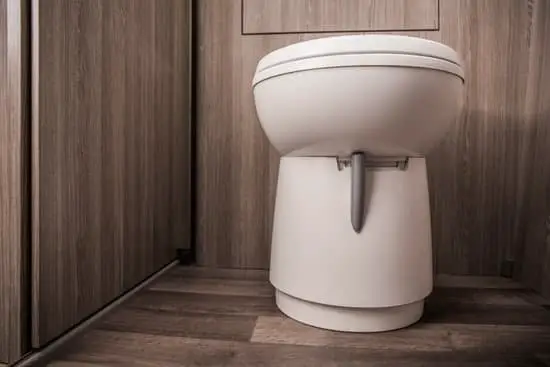Are you looking for a way to test your RV solenoid? If so, then this post is for you. There are many ways to test an Rv solenoid and we will discuss them in detail below. However, the first thing that you should do when troubleshooting an Rv solenoid is identified what type of problem it might be having.
There are very common signs of a bad starter solenoid; some of them are easy to detect while others are a little more tricky and require some level of keenness before you detect them.
The starter solenoid makes a rapid clicking sound in the engine bay when you turn on your vehicle.
While reversing gears, if you notice that the drive gear has reversed direction to go back into neutral before it gets to where it needs to be for reverse then this can also signify an issue with your starter solenoid caused by air or oxidation in your system.
If while trying to troubleshoot these problems and identify what type of problem they might have been having; all we know so far is that most likely these are signs of different kinds of issues which may not necessarily point towards just one thing but instead more than one diagnosis could be possible.
- A rapid clicking sound from the starter solenoid may signify air or oxidation in your system as well as a good battery and enough gas in the tank, which is an example of one problem that might be having.
- Continuous rotation with no start happening can point to more than one diagnosis such – air or oxidation getting into the system, good battery but not enough gas for some reason, slow cranking speed due to low compression on engine cylinders (usually caused by wear), etc.
- Drive gear reversing direction back into neutral before it gets to where it needs to go for reverse points towards drive gear binding up because of lack of lubrication; this could also happen sometimes if you have a starter solenoid issue.
- If you experience these issues, it’s time to find out what the problem is and we will discuss below how this can be done with different methods of testing a starter solenoid.
What are the Signs of a Bad Solenoid
- The engine won’t start or crank.– When the engine is trying to start, it doesn’t make a clicking sound.
- Starter spins without fully engaging the flywheel (Rare).
- Engine Cranks Slowly (Rare).
- Test the battery.
- Make sure that you reach the Starter Solenoid.
What happens if a solenoid valve malfunctions?
The solenoid can fail, causing the starter not to turn when it is turned. Internal corrosion can cause the slug to freeze in its “away” position. This is what happens when the solenoid fails — the engine won’t turn over.
How can you bench-test the solenoid in a laboratory?
https://www.youtube.com/watch/ZcGeOMhbX6o
- How can you tell if your solenoid is bad?
- Nothing ever happens.
- A “click” sound can be heard under the car or in the engine compartment.
- Repetitive “clicking” sounds are a sign of a dead battery.
What causes a starter solenoid to fail?
If the starter solenoid receives too much power from the batteries, it will not start the motor. The motor may even make a clicking sound. Low battery power can be caused by corroded, loose connections, or damage to the positive cable (red).
How do I test my starter power?
https://www.youtube.com/watch
Is it possible for a bad solenoid to jump-start a car?
You should exercise caution when jumping-starting your car with a solenoid (a switching mechanism sending a 12-volt current to the starter). If the solenoid malfunctions, you won’t hear clicking. While bypassing the solenoid may allow you to jump-start your vehicle, it’s important to be careful.
Is it possible to drive with bad solenoid timing for variable valves?
Can you drive with a bad solenoid for your VVT? While you technically can drive with a bad solenoid on the road it could cause additional damage such as to your VVT actuator. The problem should be addressed immediately.
How does insufficient voltage affect solenoid valve performance?
This could indicate a voltage loss across the solenoid coil’s wire leads. Also known as a “power failure”, If there isn’t enough current, the valve won’t open.
How do you bench-test a starter solenoid?
https://www.youtube.com/watchhttps://www.youtube.com/watch?
How do I test the starter solenoid with a multimeter?
https://www.youtube.com/watch/n54VWk8LRuU
How do I test the starter motor bench?
https://www.youtube.com/watch
How do I test the starter in my car?
https://www.youtube.com/watch
How do you get around the starter solenoid?
https://www.youtube.com/watch.v=E2Q_rSyCCZY
What is it like to hear a bad starter solenoid?
Loud clicking is a sign that you have a poor starter. Click click-click click-click-click -click-click click-click click-click These sounds are produced by only one part, so you will likely be charged for another starter.
How can you test a starter solenoid with a multimeter?
https://www.youtube.com/watch/n54VWk8LRuU?
Can a starter pass but still fail the bench test?
#2 Although the starter may fail bench testing, that doesn’t mean it is defective. Sometimes, the solenoid can get stuck. If this happens, a little jostling (like when you remove it) can help it to move for a few cranks.
Is it possible to use a starter that has a solenoid but no solenoid?
These wires will be needed to connect your starter with an ignition switch. The required size of the switch would be four to fivefold larger than it is currently.
How can you tell if a solenoid is bad?
It is rare for a starter solenoid failure to occur, but there are signs you need to be aware of. The starter solenoid will make a clicking noise and the starter will continue to rotate even if the engine is not running. Also, the starter will not turn; instead, it will cause the drive gear to reverse.






